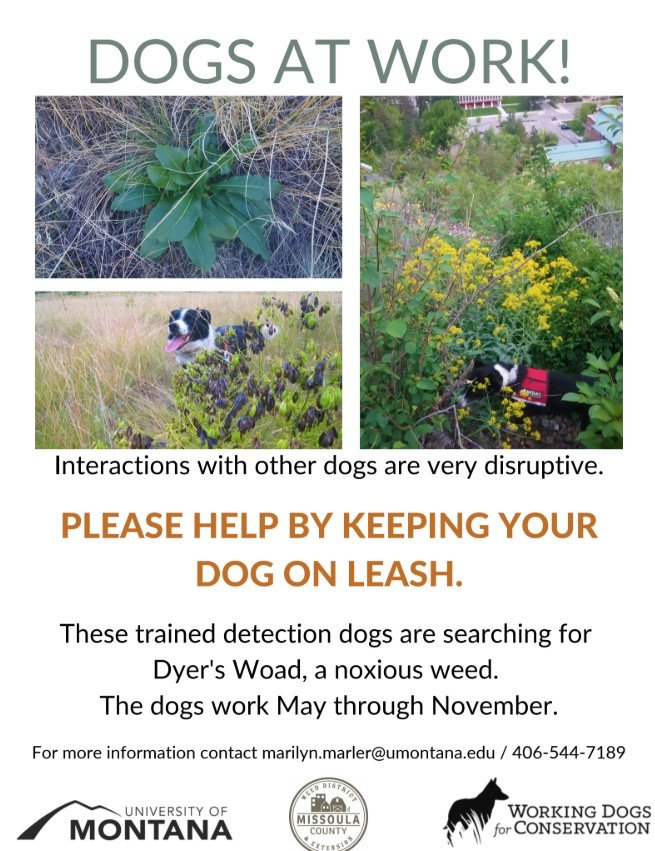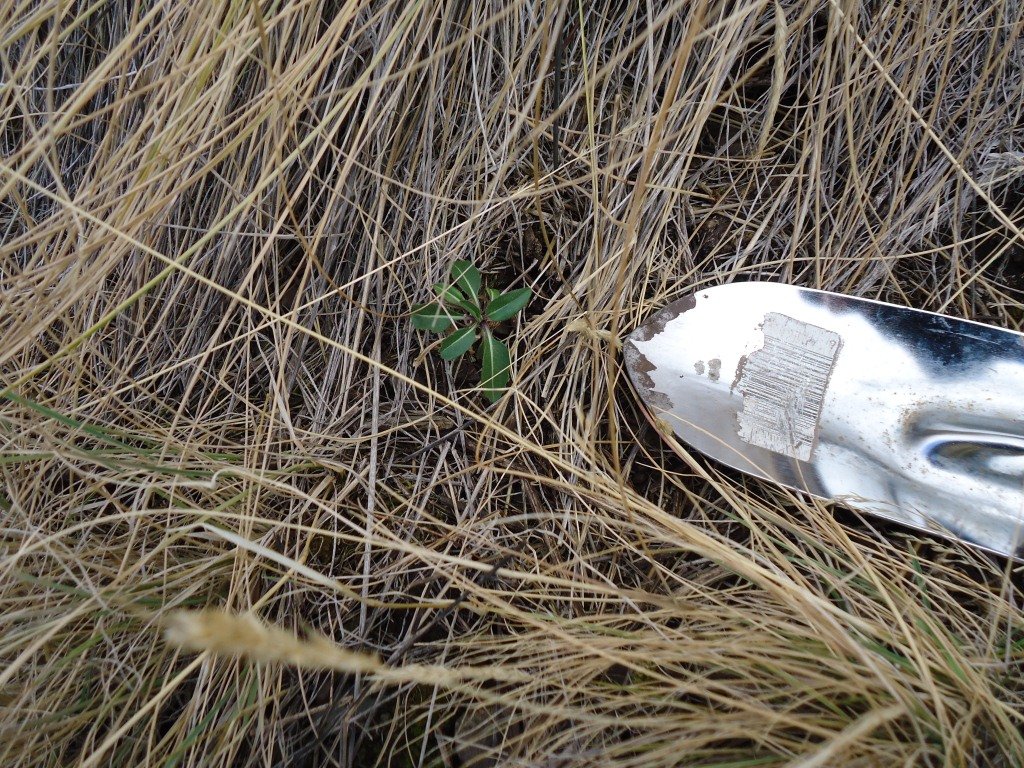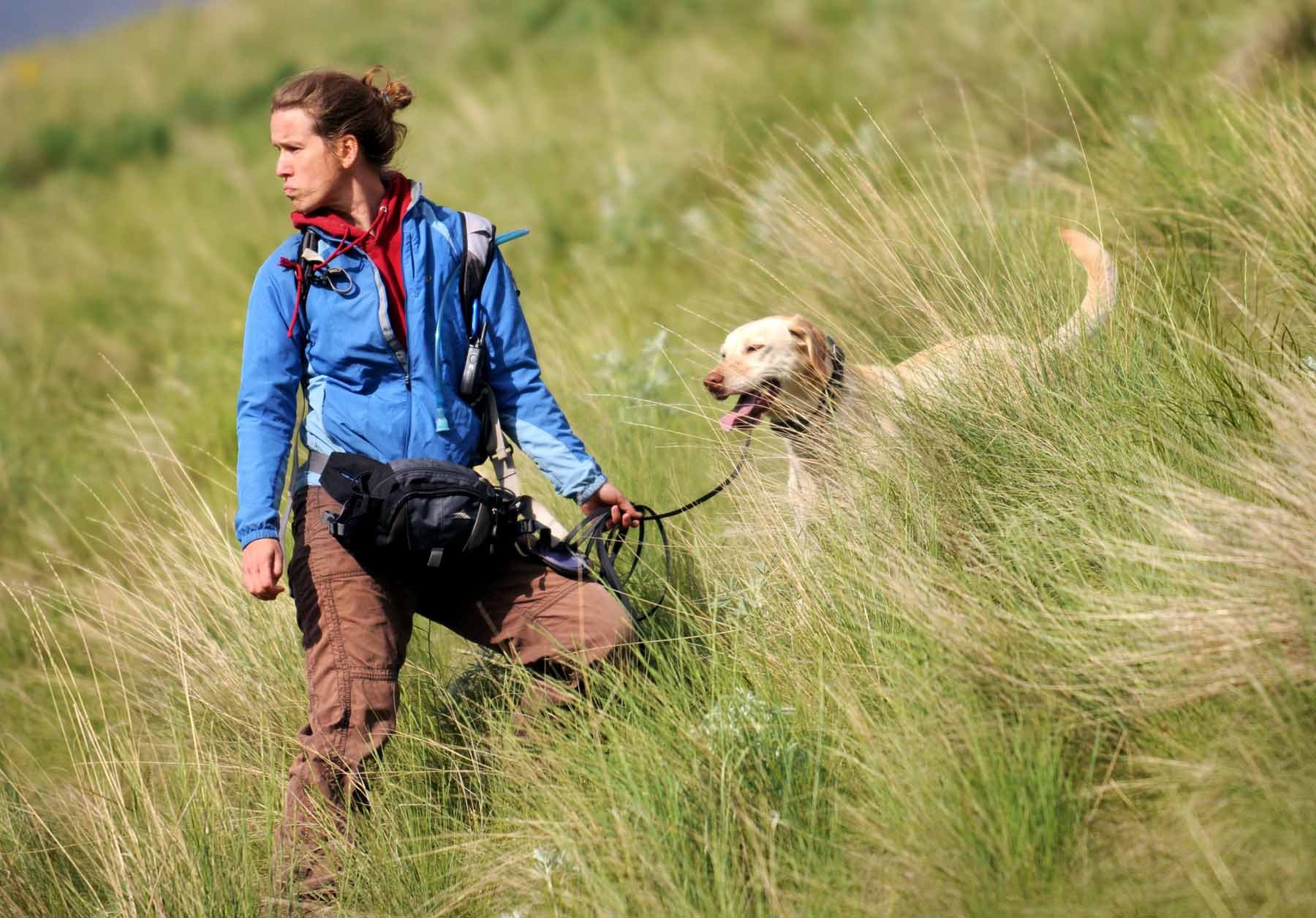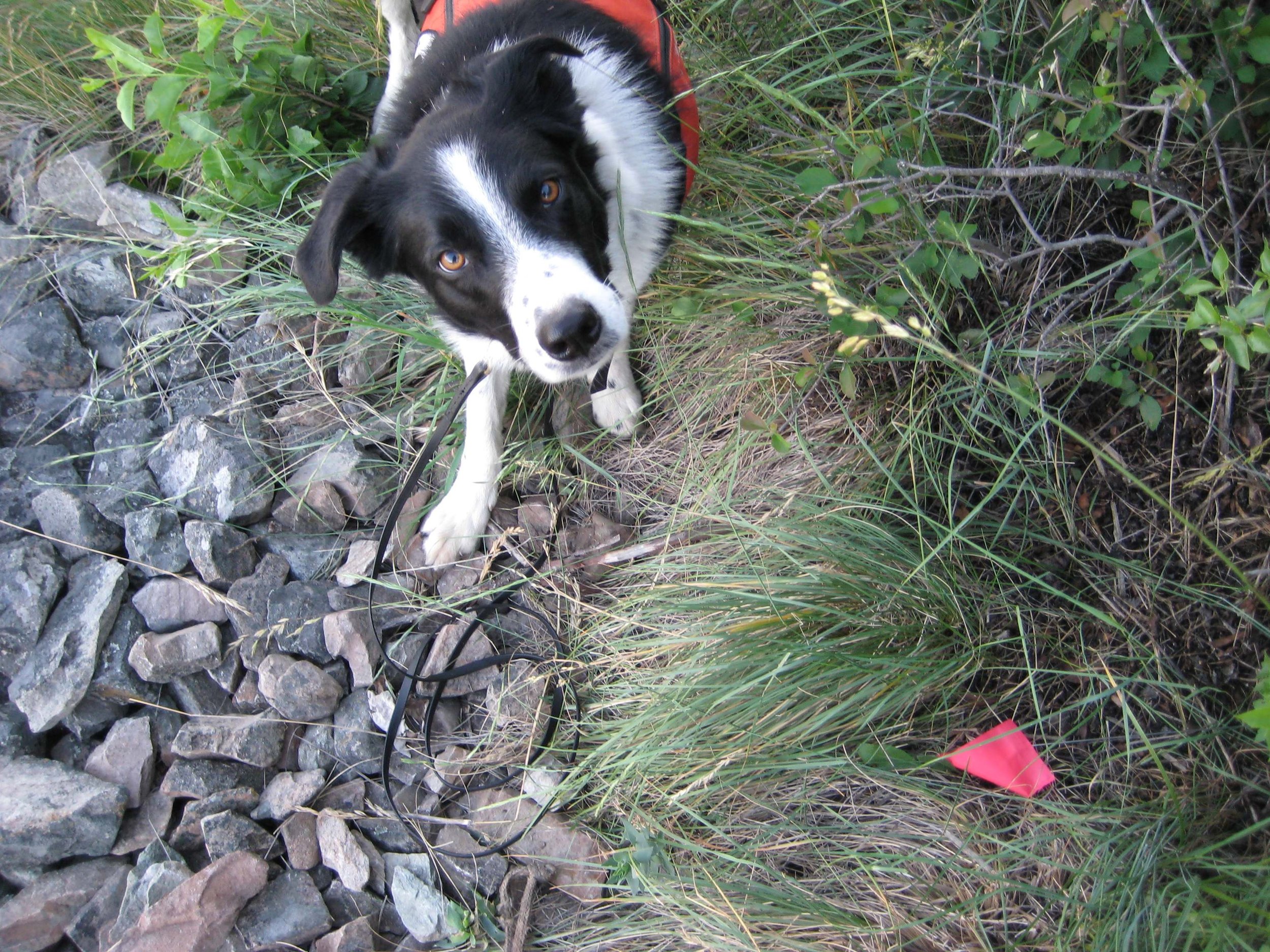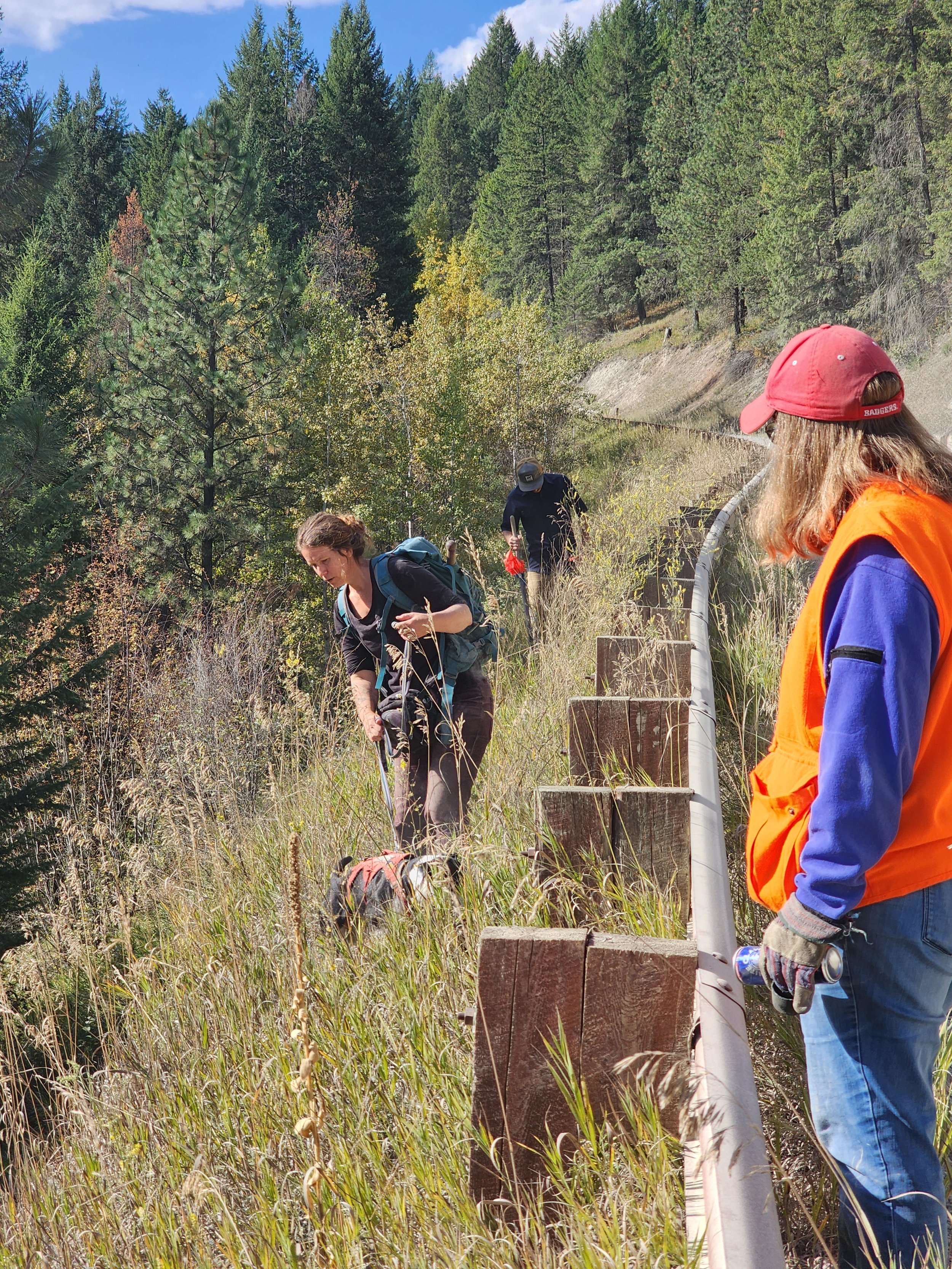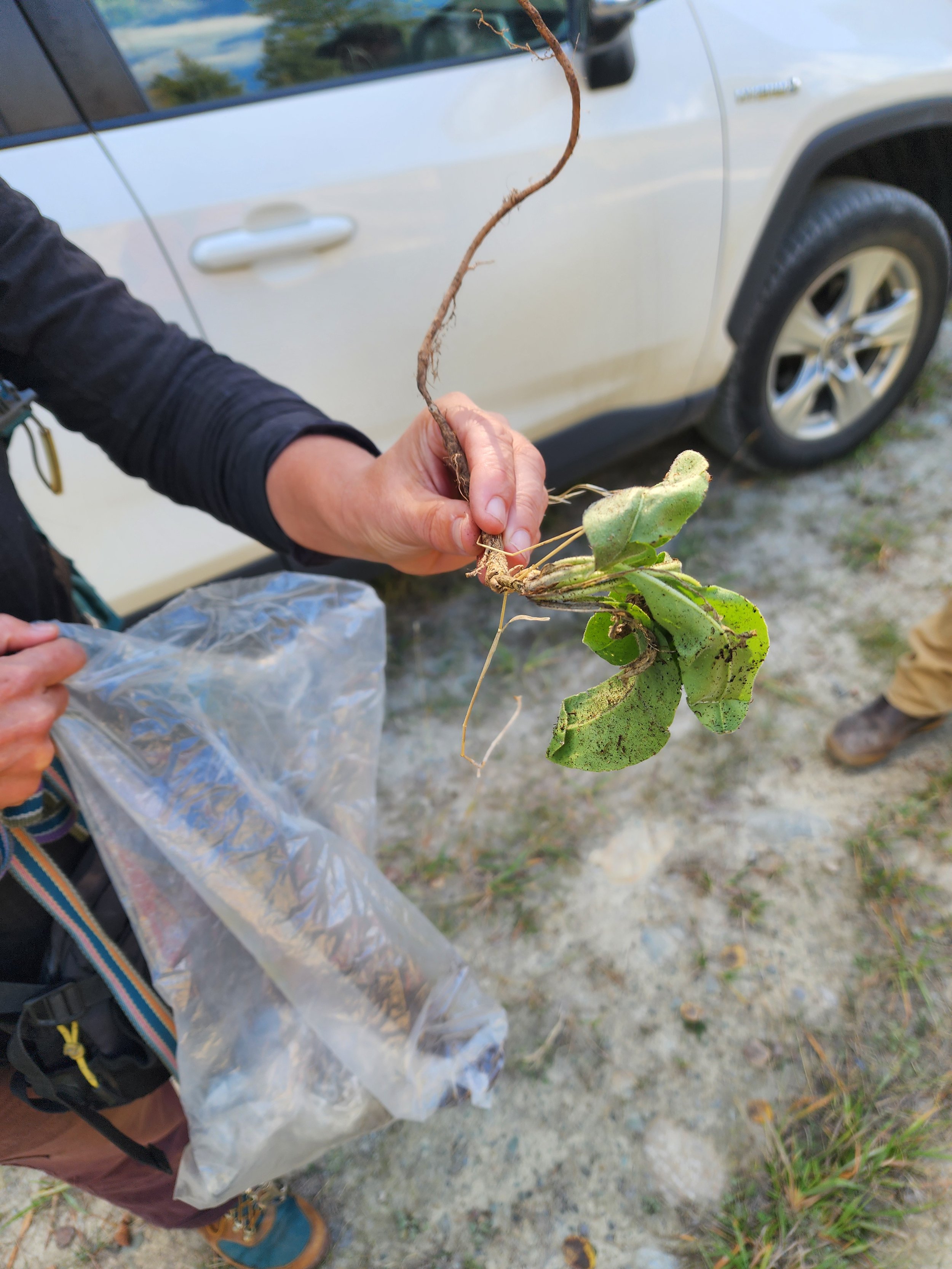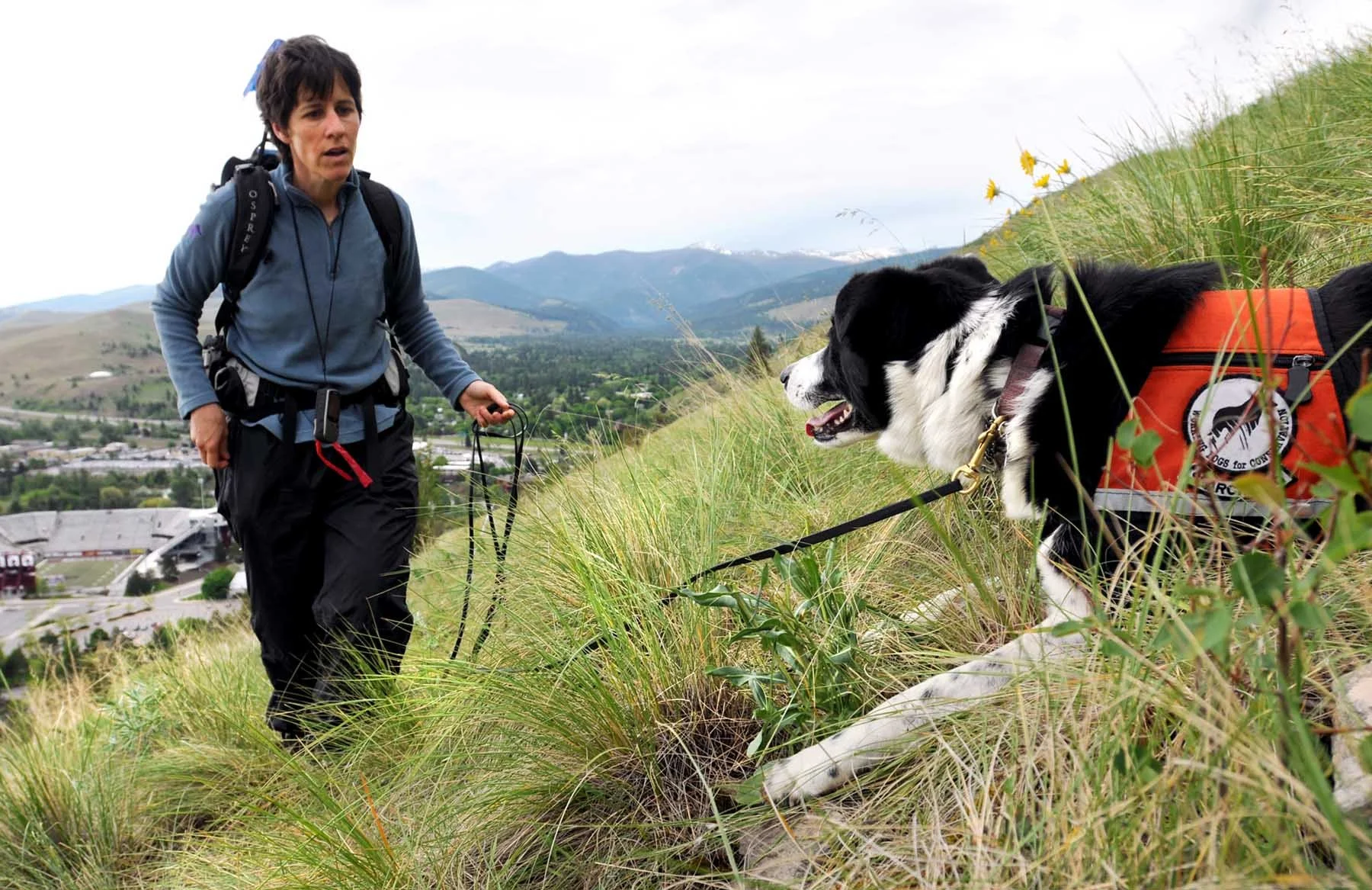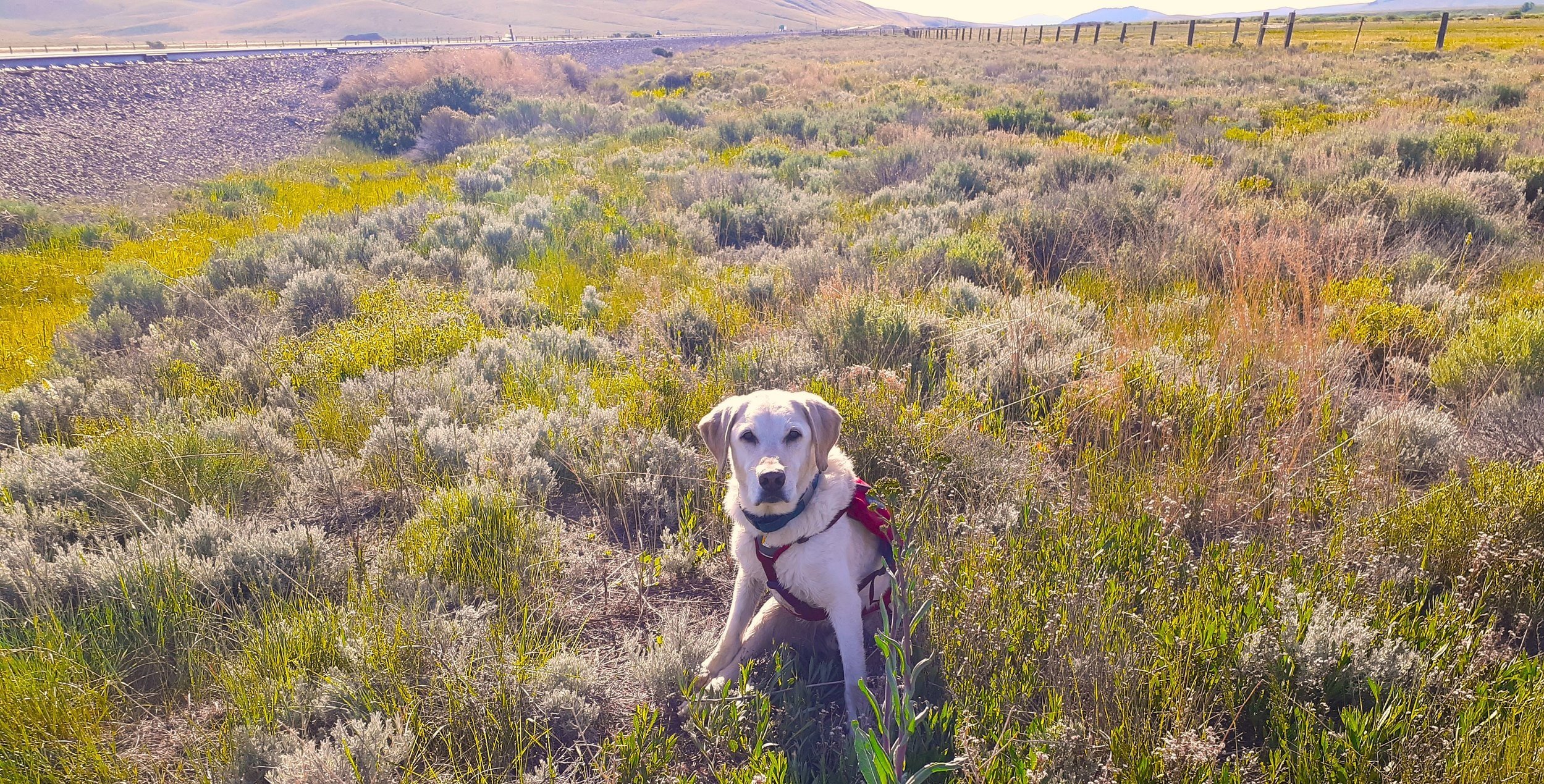
OUR WORK: BIOSECURITY
Montana’s Dyer’s Woad Cooperative Project
-
Montana, USA
-
Early detection, containment and eradication of invasive dyer’s woad plants across Montana
-
Dyer’s woad (mature plants, emergent seedlings, remnant roots)
-
Beaverhead County, University of Montana, Missoula County Weed District and Extension, Montana Department of Agriculture, EDRR/Agriculture Sciences Division
This unassuming looking plant is also a prolific seed producer, with an average of about 400, but up to 10,000 seeds per plant. As tenacious as it is resilient in these non-native habitats, it remains challenging to eradicate.
But this plant can be intercepted and combatted! In Montana, early detection and rapid response has proven imperative to the successful control of Dyer’s Woad. Working Dogs for Conservation was first approached to assess how dogs could help in efforts against this plant in the early 2000s. Since then, we have deployed numerous dog-handler teams across the state, trained multiple successive generations of dogs, built on lessons learned to refine our strategy, and become a full stakeholder in the Montana Dyer’s Woad Cooperative Project.
Separated in some cases by hundreds of miles, each site comprises its own set of challenges for the teams. The most visible of these is Mount Sentinel in Missoula, where ‘Dogs at Work!’ signs placed at trailheads have been effective in enhancing outreach and education.
In our first year of surveying with dogs teams on Mount Sentinel in 2011, nearly 600 plants were found and removed. Found all across the 200 acre face of this beloved recreational space, a significant proportion were mature plants, and many had reached the dreaded flowering and seeding stage. Now, after nearly 15 years, we have identified and isolated hotspots and seedbanks, and typically find 10 – 20 seedlings or immature plants within the hotspot area. One of the neatest things that the dogs taught us was that Dyer’s Woad can look very different at our various sites, most likely due to varying environmental conditions, like drainage and terrain. Thanks to several dogs insisting that we stop at plants we would otherwise not even have registered, with subsequent DNA testing and confirmation at a lab, we are now much better able to support the dogs during their search. And we have shared images of these plants with managers so they can also expand their search image.
The Montana Dyer’s Woad Cooperative Project’s overall goal is to eradicate this plant from Montana. The Project’s specific objectives are to 1) manage known Dyer’s Woad infestations and report on/respond to new ones immediately, 2) map and monitor known infestations via GPS, 3) inventory new areas surrounding known infestations for potential spread (satellite populations), and 4) educate land managers and the public on Dyer’s woad identification and management, leveraging the ambassadorial capabilities of WD4C dogs.
Together, these efforts have prevented Dyer’s Woad from becoming a major problem in Montana. This longstanding and cherished collaboration has become one of the most frequently referenced examples of successful invasive plant management. It is a testament to the success that can be achieved with the integration of highly trained conservation dogs!
Dyer’s Woad (Isatis tinctoria) is a plant native to Southeast Russia. Since its initial introduction to the US in the early 1900s through contaminated alfalfa seed, it has spread and proliferated throughout the West.
Dyer’s Woad has an accelerated growth rate and can grow up to 4 inches in one week. Deep tap roots make it highly competitive and able to dominate plant communities, with catastrophic displacement of native plants that alters ecosystems to the detriment of local economies, particularly agricultural ones.

